
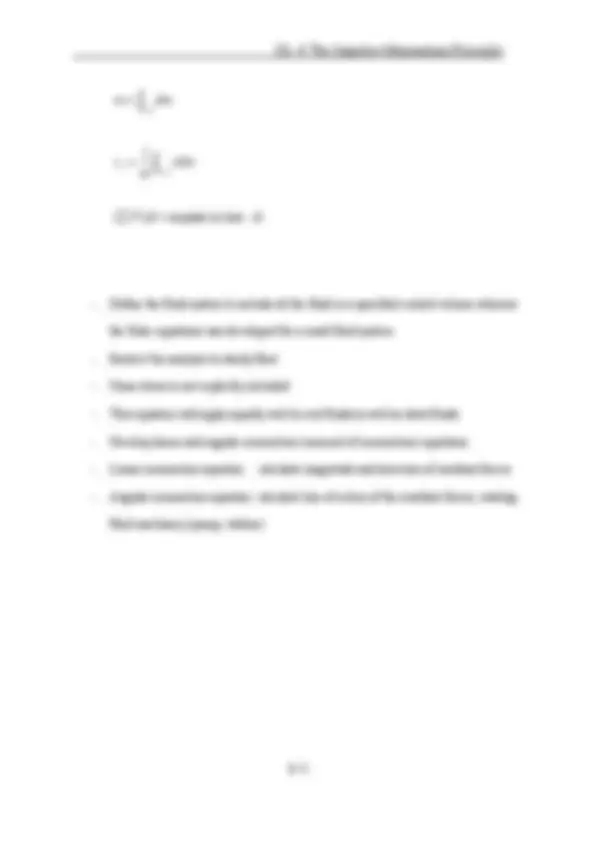
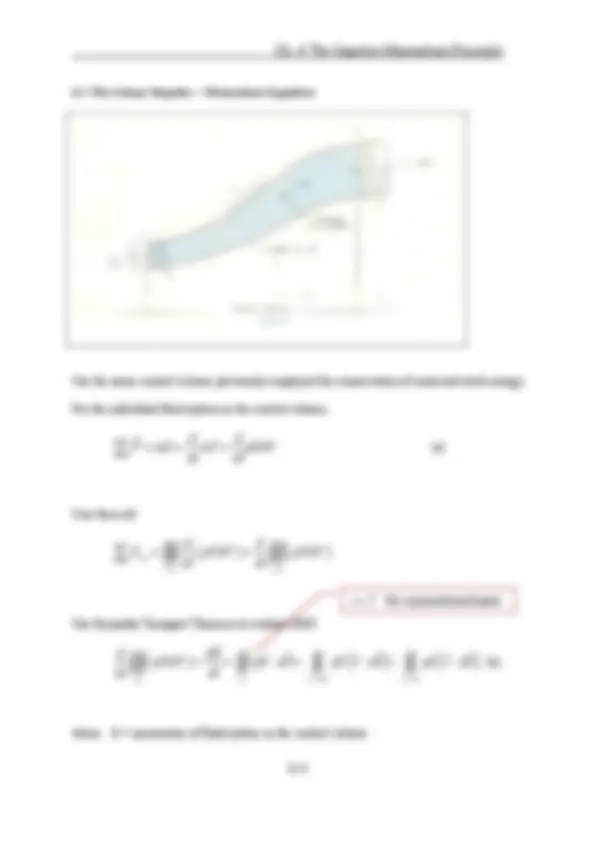
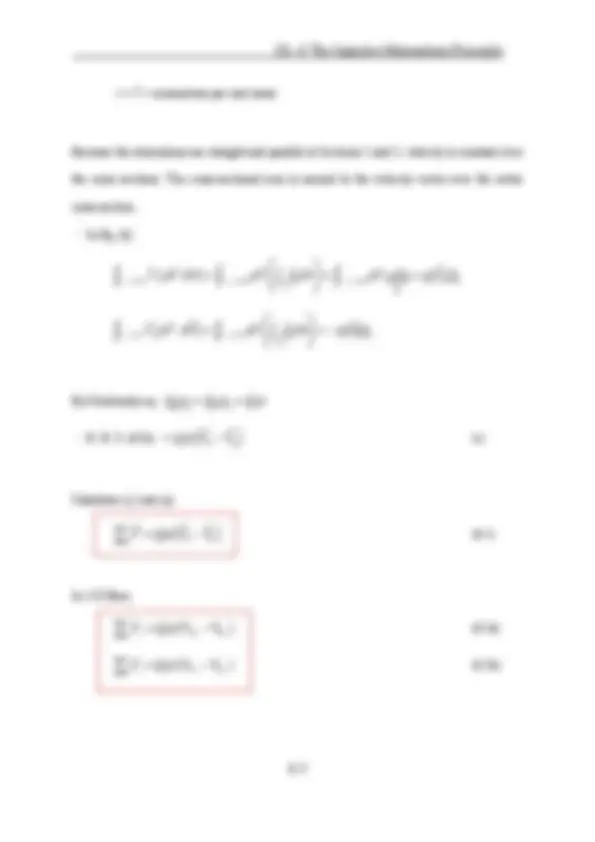
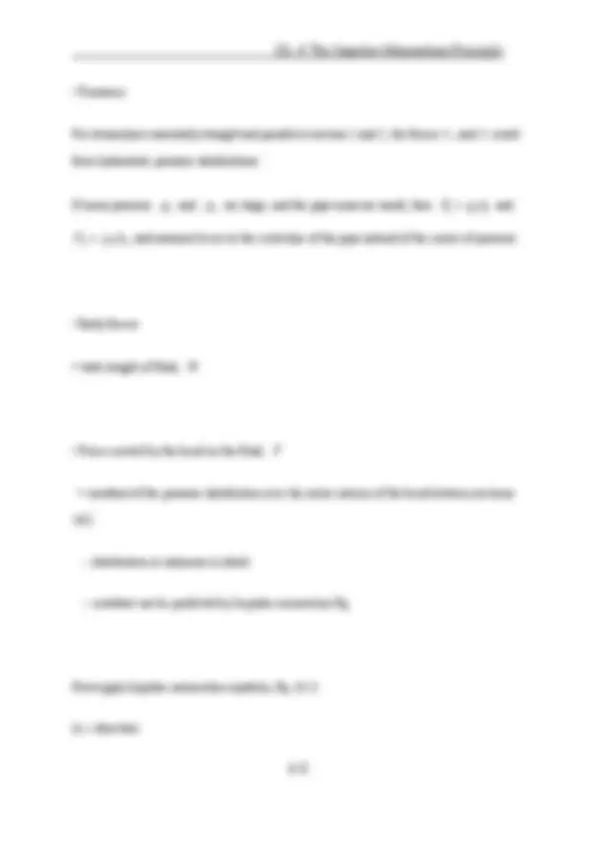
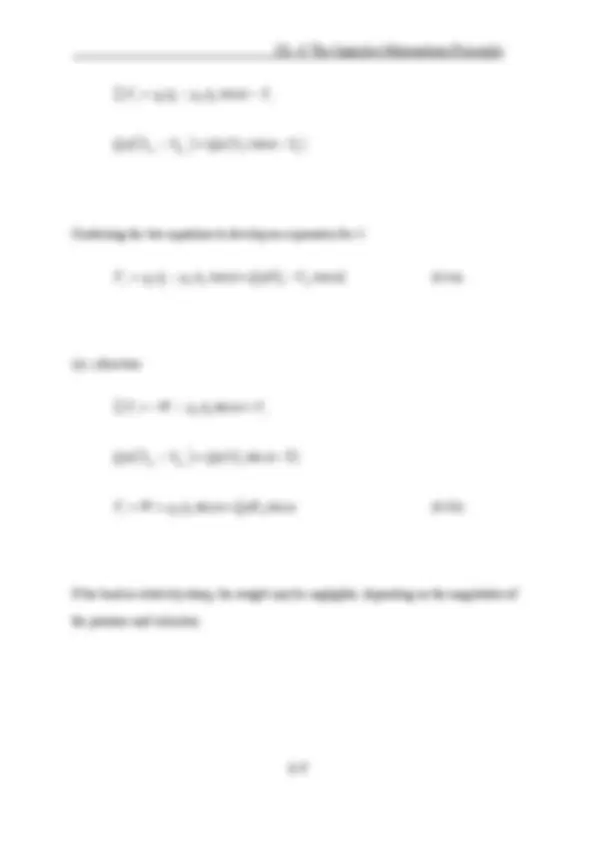
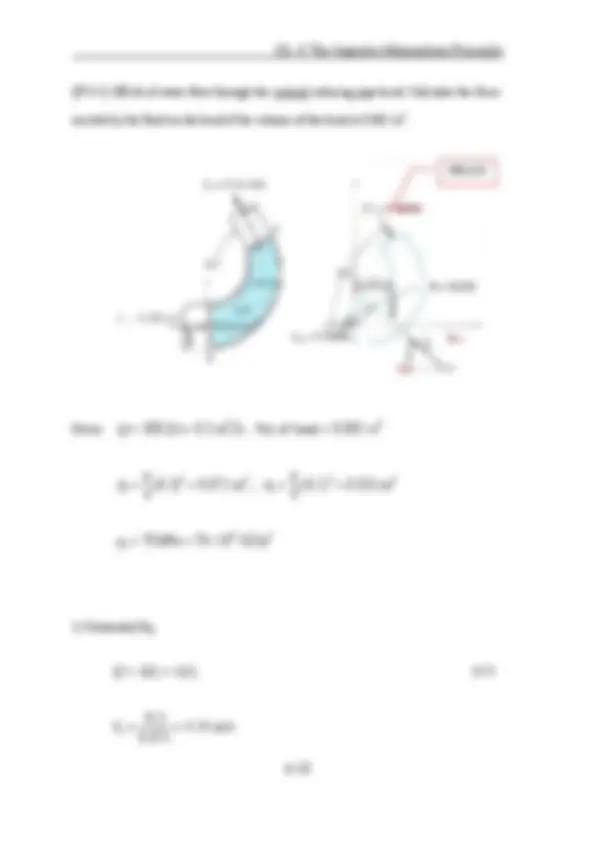
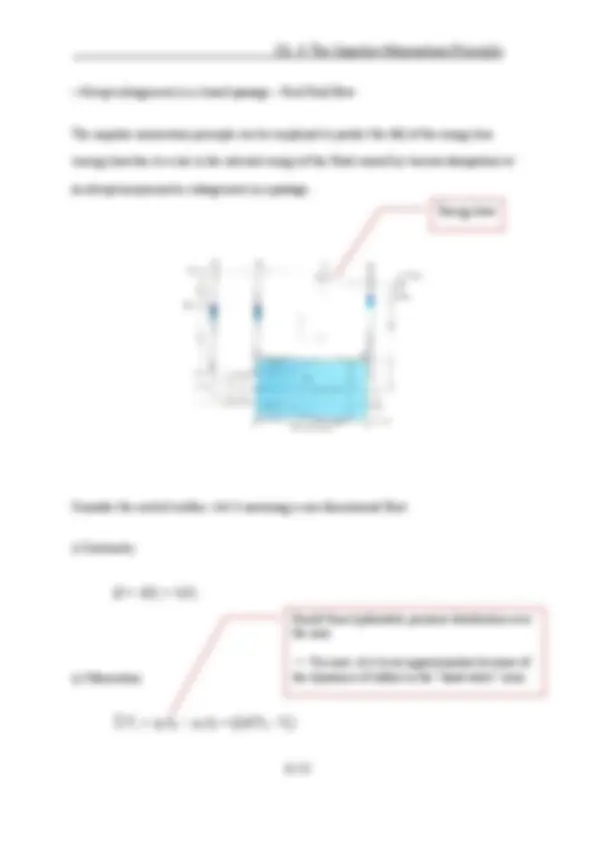
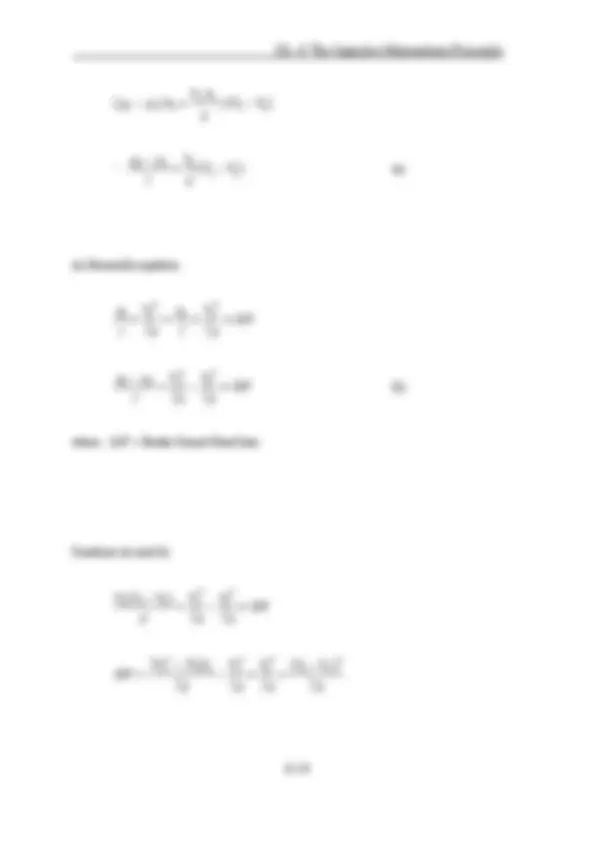
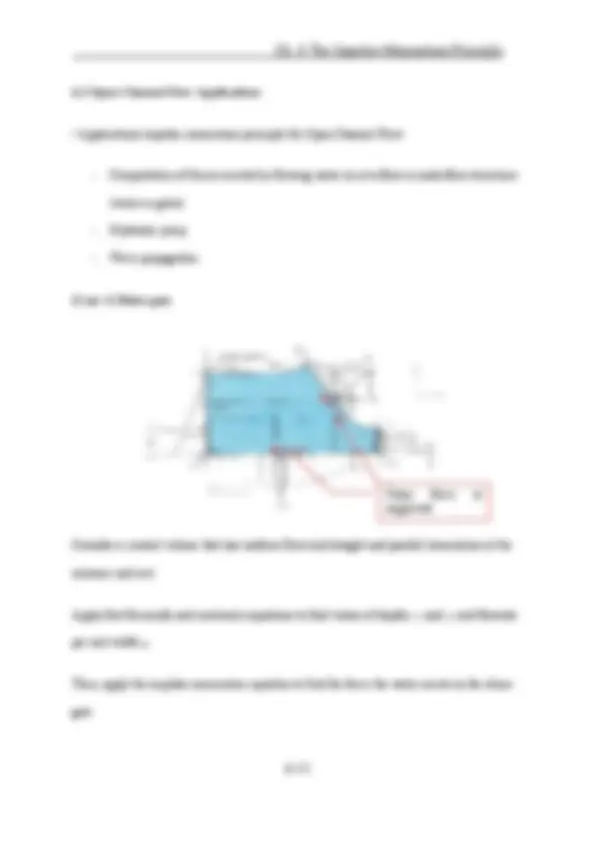
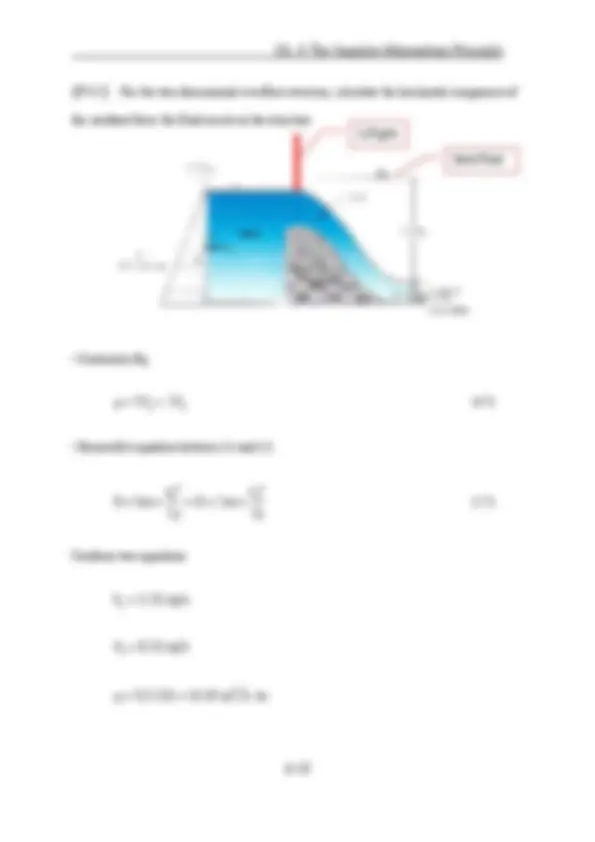
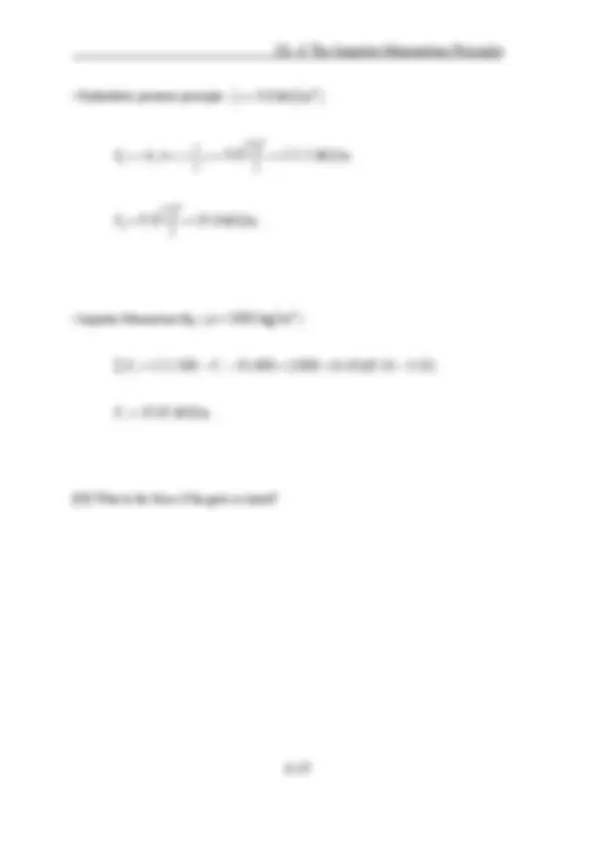
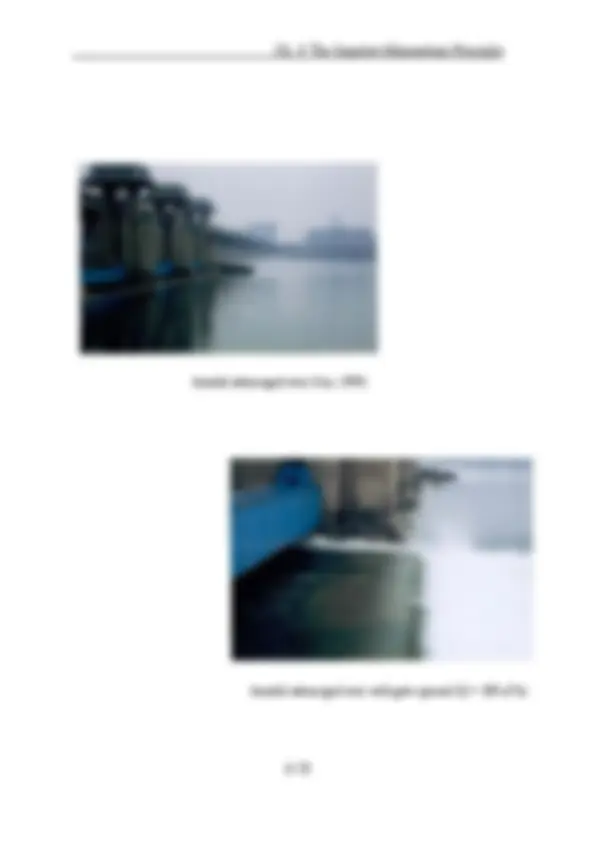
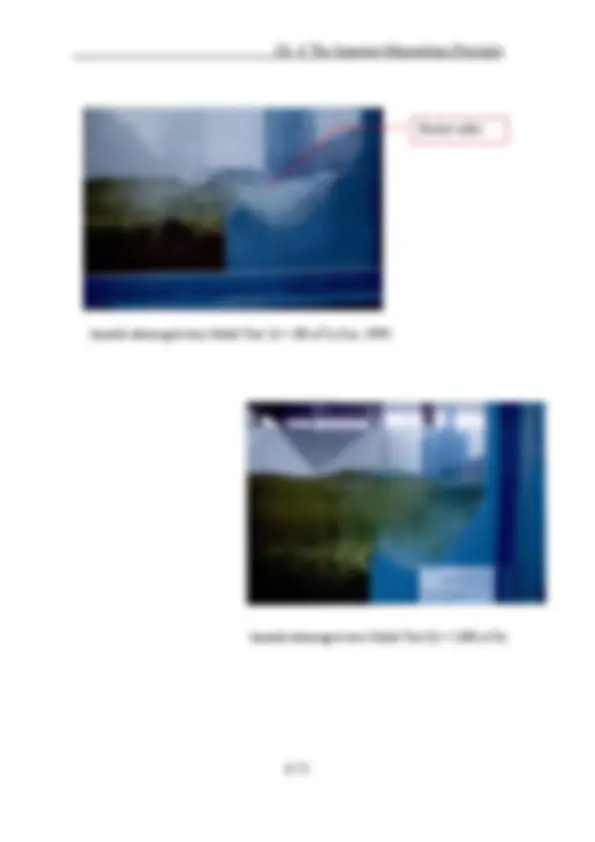
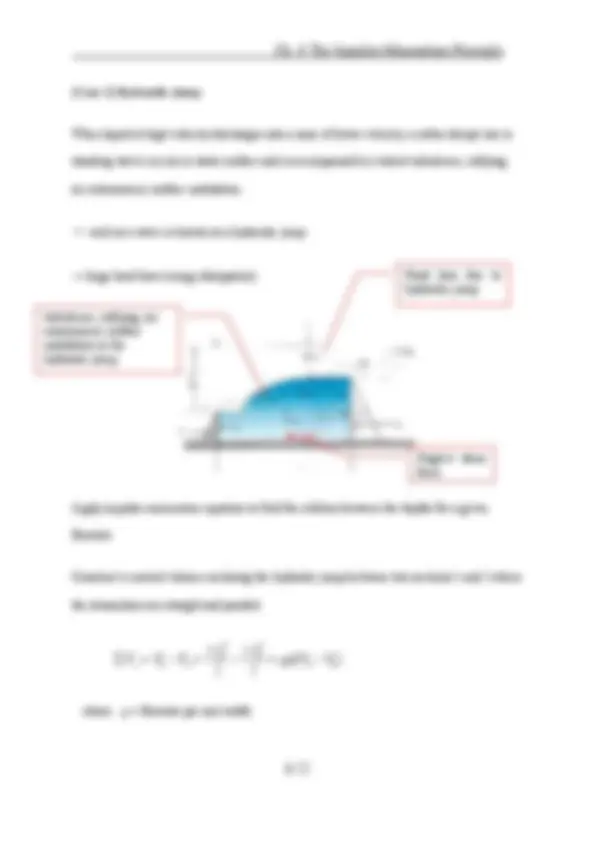
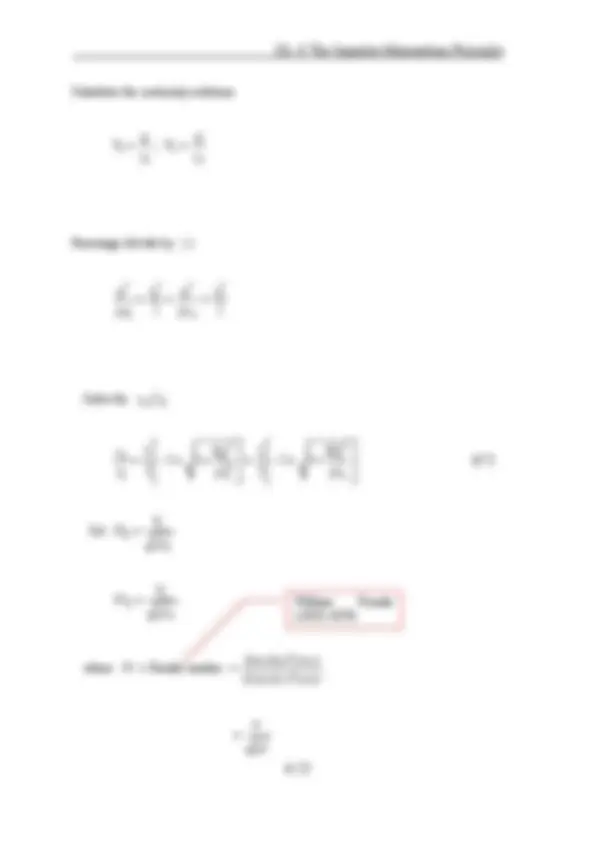
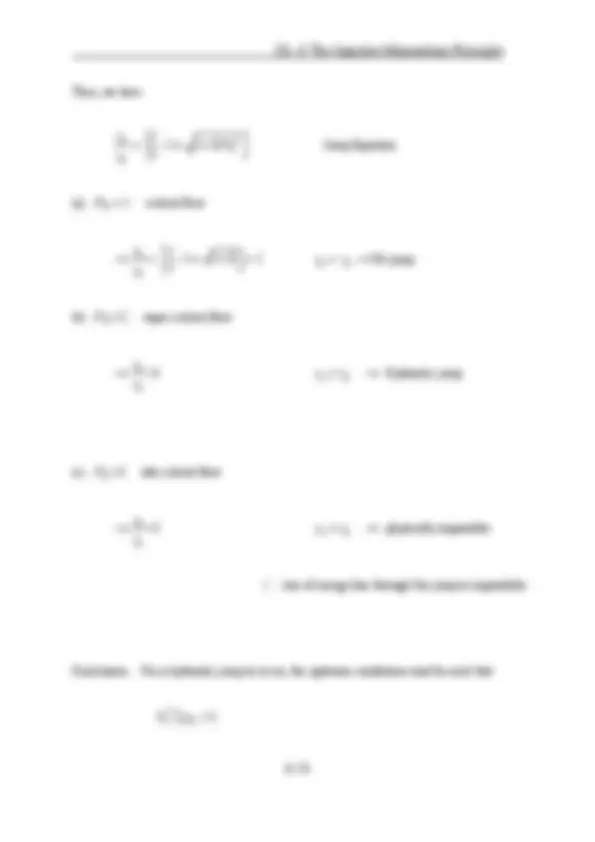
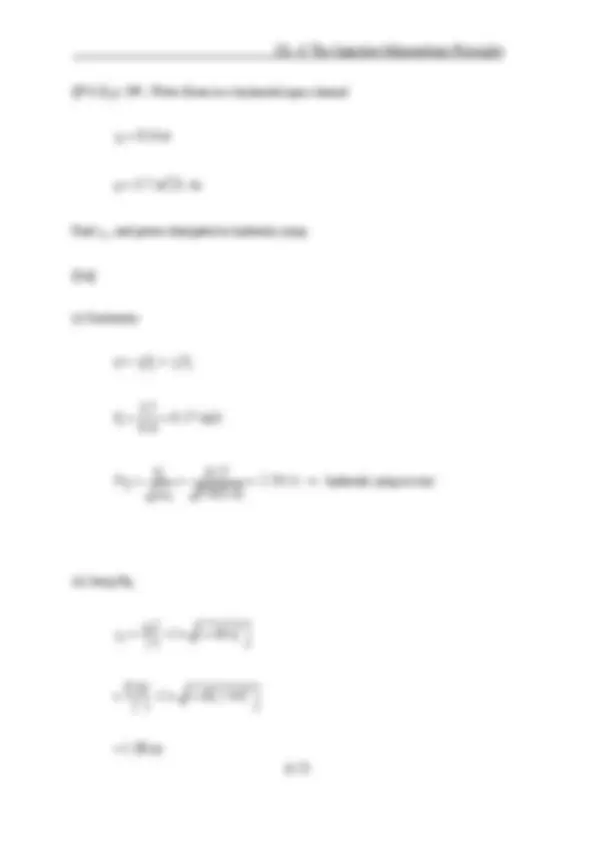
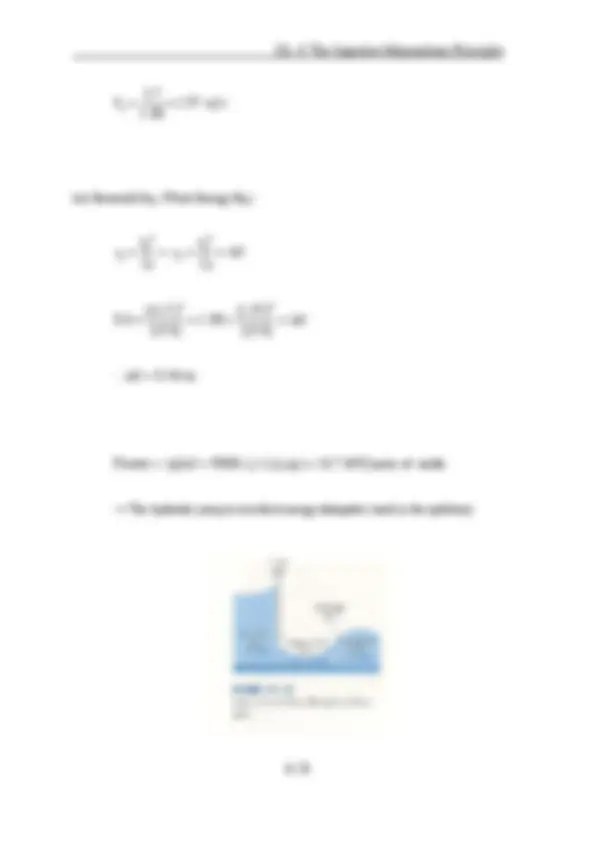
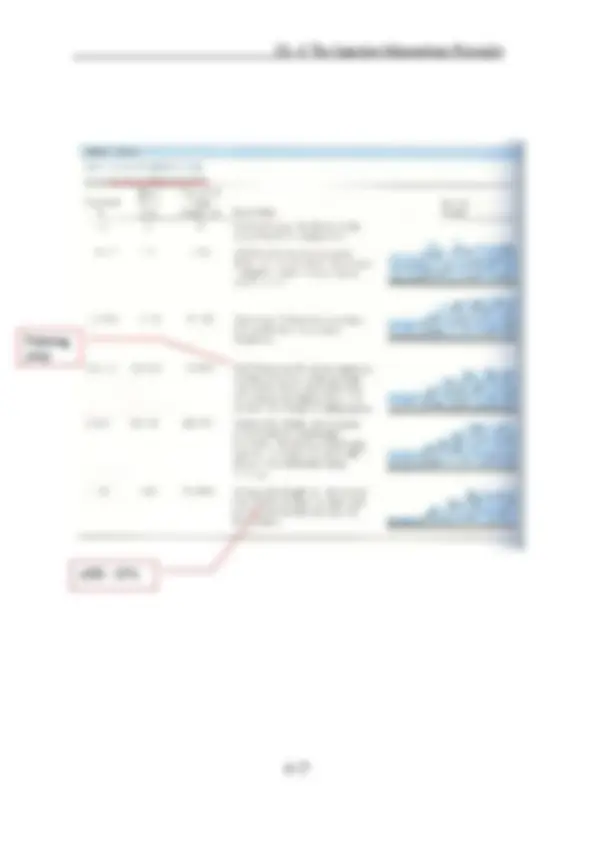
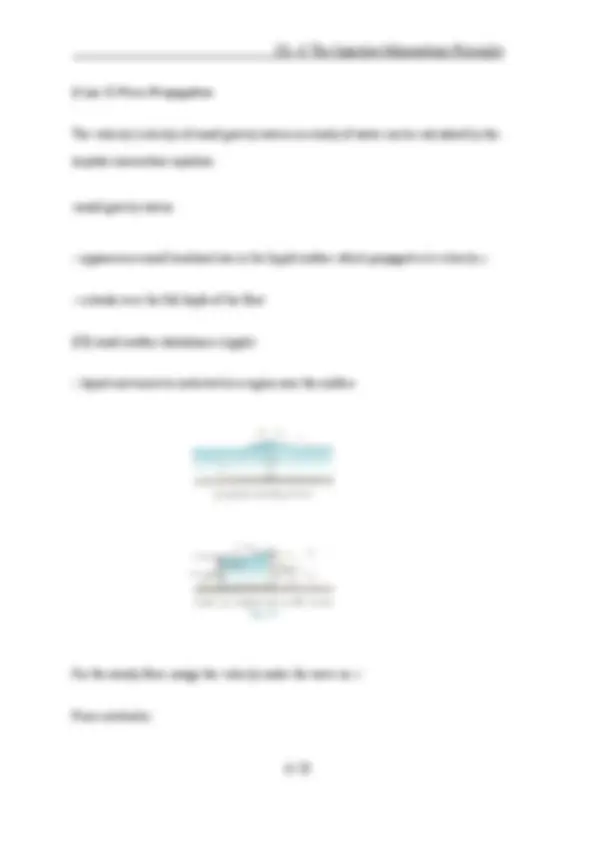
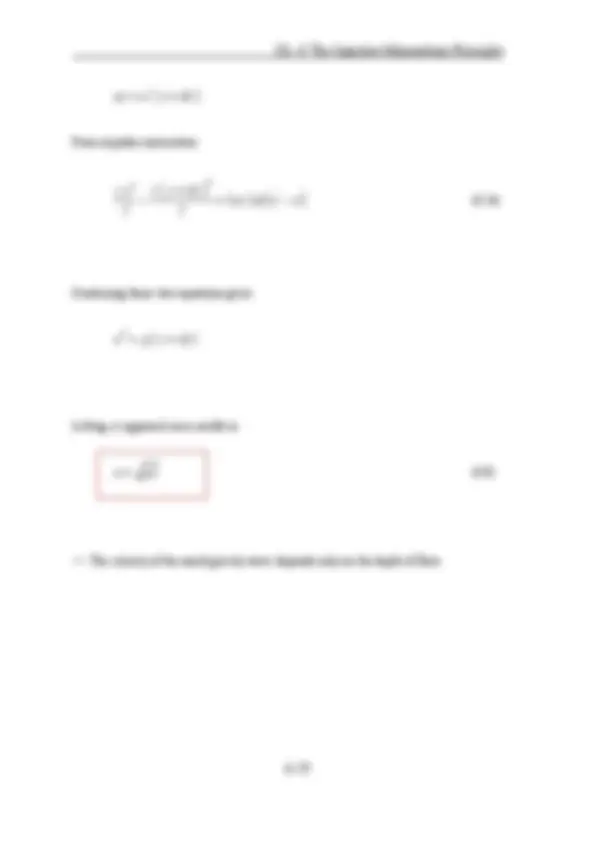
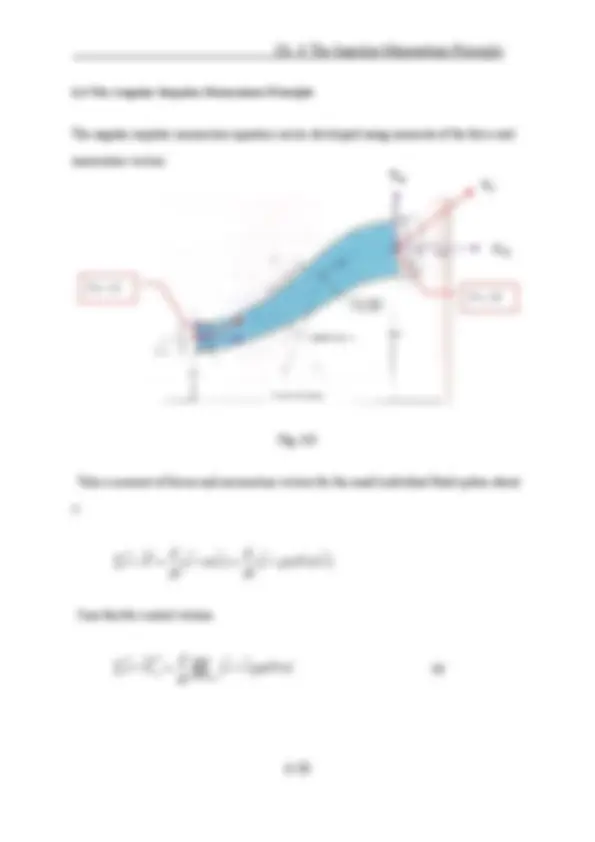
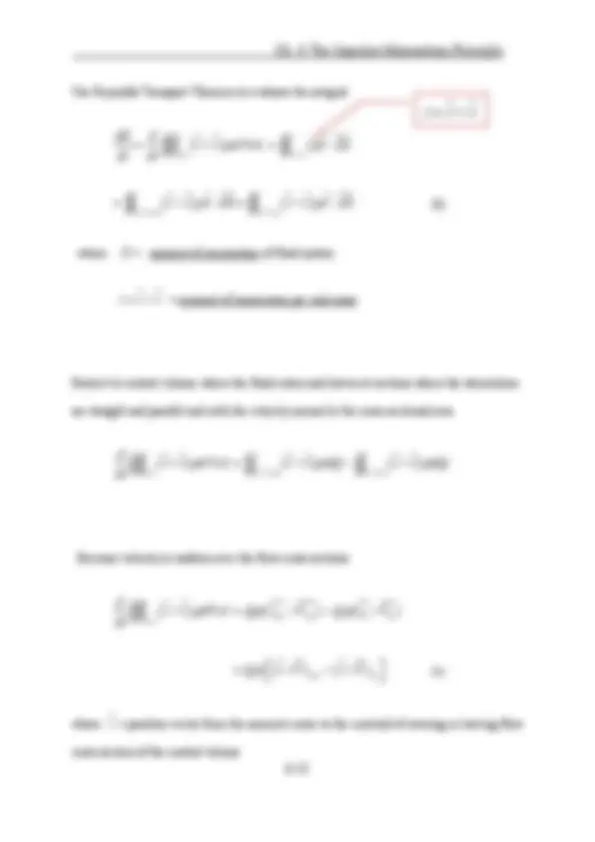
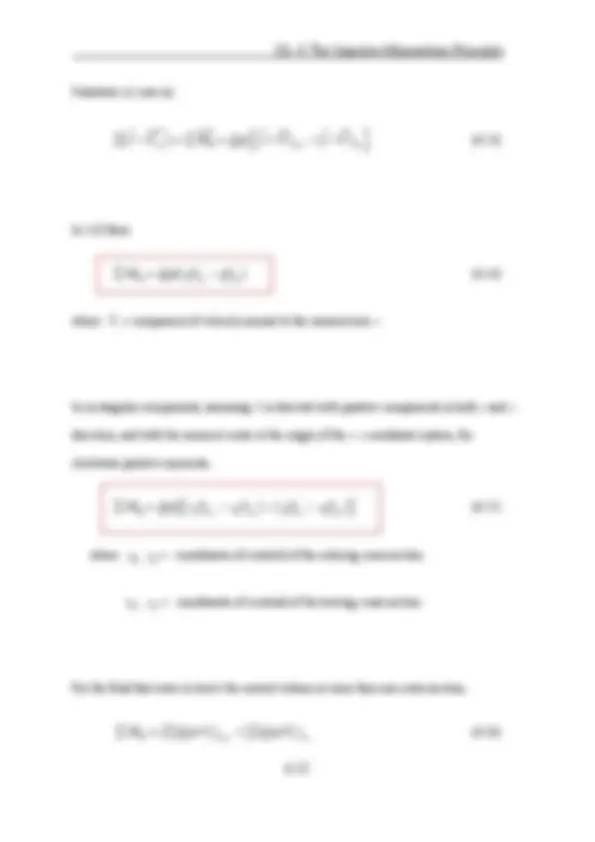
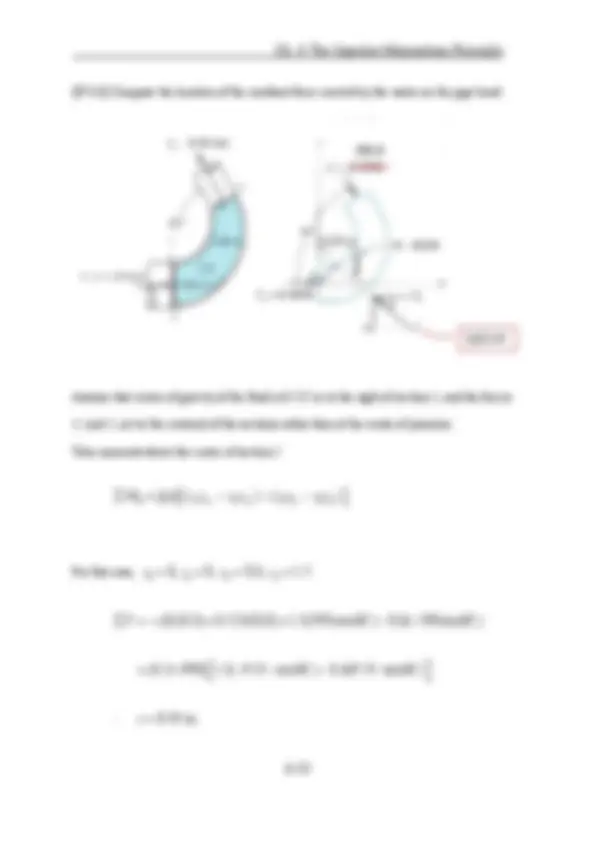
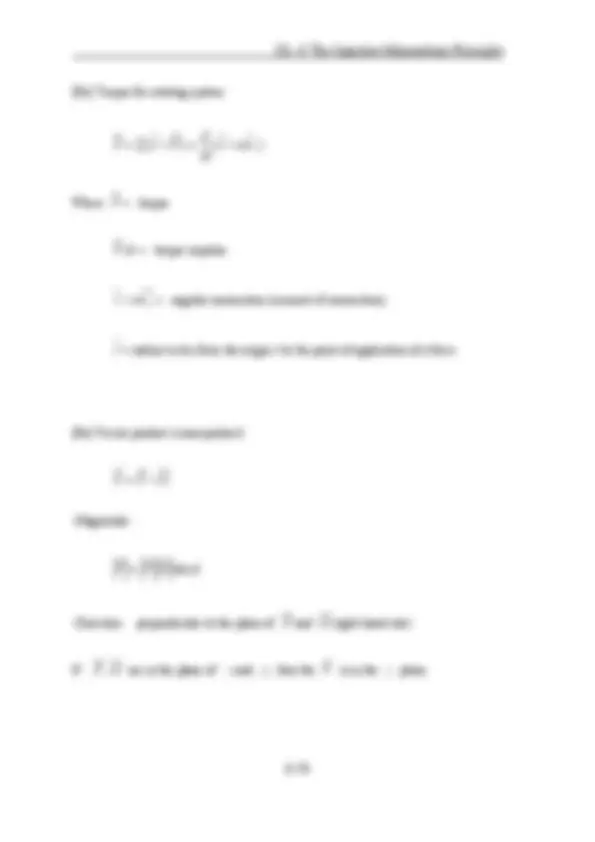
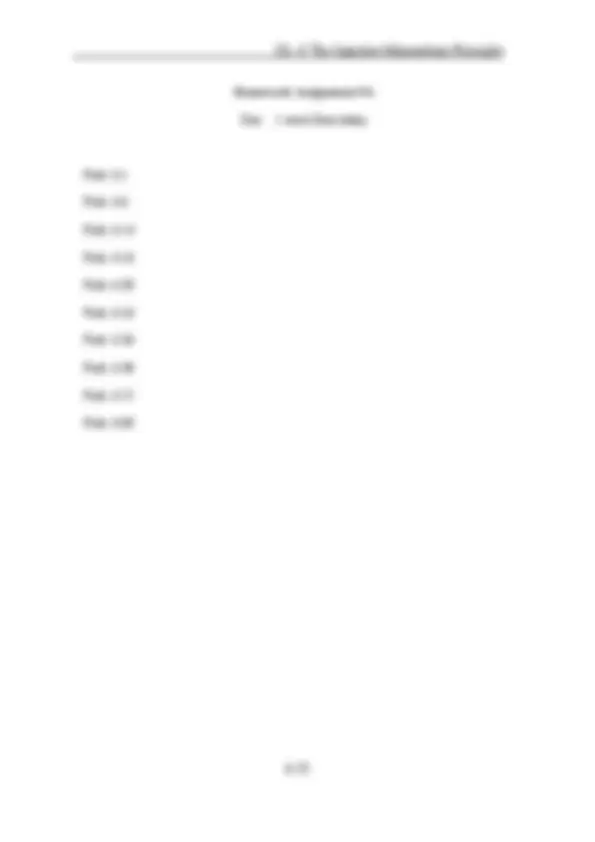


Study with the several resources on Docsity

Earn points by helping other students or get them with a premium plan


Prepare for your exams
Study with the several resources on Docsity

Earn points to download
Earn points by helping other students or get them with a premium plan
Community
Ask the community for help and clear up your study doubts
Discover the best universities in your country according to Docsity users
Free resources
Download our free guides on studying techniques, anxiety management strategies, and thesis advice from Docsity tutors
Develop impulse - momentum equation, the third of three basic equations of fluid mechanics, added to continuity and work-energy principles.
Typology: Schemes and Mind Maps
1 / 35

This page cannot be seen from the preview
Don't miss anything!




























6.1 The Linear Impulse-Momentum Equation
6.2 Pipe Flow Applications
6.3 Open Channel Flow Applications
6.4 The Angular Impulse-Momentum Principle
Objectives:
mechanics, added to continuity and work-energy principles
6.0 Introduction
- Three basic tools for the solution of fluid flow problems
Impulse - momentum equation
Continuity principle
Work-energy principle
~ derived from Newton's 2nd law in vector form
F ma
Multifly by dt
( (^) c )
d F mv dt
where vc
velocity of the center of mass of the system of mass
mv c
linear momentum
6.1 The Linear Impulse – Momentum Equation
Use the same control volume previously employed for conservation of mass and work-energy.
For the individual fluid system in the control volume,
d d F ma mv vdV dt dt
^ ^ ^
(a)
Sum them all
ext^ ^ ^ ^ sys sys
d d F vdV vdV dt dt
^
Use Reynolds Transport Theorem to evaluate RHS
(^) sys c s.. c s out.. c s in..
d dE vdV i v dA v v dA v v dA dt dt
^ ^ ^ ^ ^ ^
(b)
where E = momentum of fluid system in the control volume
i v
for momentum/mass
i v
momentum per unit mass
Because the streamlines are straight and parallel at Sections 1 and 2, velocity is constant over
the cross sections. The cross-sectional area is normal to the velocity vector over the entire
cross section.
∴In Eq. (b)
c s out..^ ^ ^ c s out.. ^ c s out.. 2 2 2 v Q
c s in..^ ^ ^ c s in.. 1 1 1 v
∴ R. H. S. of (b) Q V 2 (^) V 1
(c)
Substitute (c) into (a)
F^ ^ Q^^ ^ ^ V 2^ V 1
(6.1)
In 2-D flow,
Fx^ ^ Q^^ ^ V^2^ x V 1 x (6.2a)
Fz^ ^ Q^^ ^ ^ V 2^ z V 1 z (6.2b)
6.2 Pipe Flow Applications
Forces exerted by a flowing fluid on a pipe bend, enlargement, or contraction in a pipeline
may be computed by a application of the impulse-momentum principle.
Known: flowrate, Q ; pressures, p 1 (^) , p 2 ; velocities, v 1 (^) , v 2
Find: F (equal & opposite of the force exerted by the fluid on the bend)
= force exerted by the bend on the fluid
For streamlines essentially straight and parallel at section 1 and 2, the forces F 1 , and F 2 result
from hydrostatic pressure distributions.
If mean pressure p 1 and p 2 are large, and the pipe areas are small, then F 1 (^) p A 1 1 and
F 2 (^) p A 2 2 , and assumed to act at the centerline of the pipe instead of the center of pressure.
= total weight of fluid, W
= resultant of the pressure distribution over the entire interior of the bend between sections
1&2.
~ distribution is unknown in detail
~ resultant can be predicted by Impulse-momentum Eq.
Now apply Impulse-momentum equation, Eq. (6.2)
(i) x -direction:
[IP 6.1] 300 l/s of water flow through the vertical reducing pipe bend. Calculate the force
exerted by the fluid on the bend if the volume of the bend is 0.085 m
3 .
Given:
3 Q 300 l s 0.3 m s;
3 Vol. of bend 0.085 m
2 2 1 (0.3)^ 0.071 m 4
2 2 2 (0.2)^ 0.031 m 4
3 2 p 1 (^) 70 kPa 70 10 N m
1
4.24 m/s
590.6 N
2
9.55 m/s
2 2 1 1 2 2 1 2 2 2
p V p V z z g g
3 2 2 70 10 (4.24) 0 2 (9.55) 1.
9,800 2(9.8) 9,800 2(9.8)
p
p 2 (^) 18.8 kPa
Apply Eqs. 6.4a and 6.4b
F 1 (^) p A 1 1 4948 N
3 F 2 (^) p A 2 2 18.8 10 0.031 590.6 N
W (volume) 9800 0.085 833 N
The impulse-momentum principle can be employed to predict the fall of the energy line
(energy loss due to a rise in the internal energy of the fluid caused by viscous dissipation) at
an abrupt axisymmetric enlargement in a passage.
Consider the control surface ABCD assuming a one-dimensional flow
i) Continuity
ii) Momentum
Result from hydrostatic pressure distribution over the area
→ For area AB it is an approximation because of the dynamics of eddies in the “dead water” zone.
Energy loss
2 2 ( 1 2 ) 2 ( 2 1 )
p p A V V g
1 2 2 ( 2 1 )
p p V V V g
(a)
iii) Bernoulli equation
2 2 1 1 2 2 2 2
p V p V H g g
2 2 1 2 2 1 2 2
p p V V H g g
(b)
where H Borda-Carnot Head loss
Combine (a) and (b)
2 2 2 (^2 1 ) 2 1 2 2
g g g
2 2 2 2 2 2 2 1 2 2 1 ( 1 2 )
2 2 2 2
g g g g
Fx F 1 (^) F 2 (^) Fx Q ( V 2 (^) (^) x V 1 (^) (^) x ) q V 2 (^) V 1
where
q W
discharge per unit width y V 1 1 (^) y V 2 2
Assume that the pressure distribution is hydrostatic at sections 1 and 2, replace V with q/y
2 2 1 2 2
2 1
x
y y F q y y
[Re] Hydrostatic pressure distribution
2 1 1 1 (^1 1) 2 2
c
y y F h A y
3 1
1 1 1
c p c c
y I l l y l A y y
1 1 1
C (^) p y y y
Discharge per unit width
For ideal fluid (to a good approximation, for a real fluid), the force tnagent to the gate is zero.
→ shear stress is neglected.
→ Hence, the resultant force is normal to the gate.
We don’t need to apply the impulse-momentum equation in the z -direction.
[Re] The impulse-momentum equation in the z -direction
F z W FOB
Non-uniform pressure distribution
2
1
9.8 122.5 kN m 2 2
c
y
2
2
9.8 19.6 kN m 2
3
Fx 122,500 Fx 19,600 (1000 16.65)(8.33 3.33)
Fx 19.65 kN m
[Cf] What is the force if the gate is closed?
Jamshil submerged weir (Seo, 1999)
Jamshil submerged weir with gate opened (Q = 200 m^3 /s)